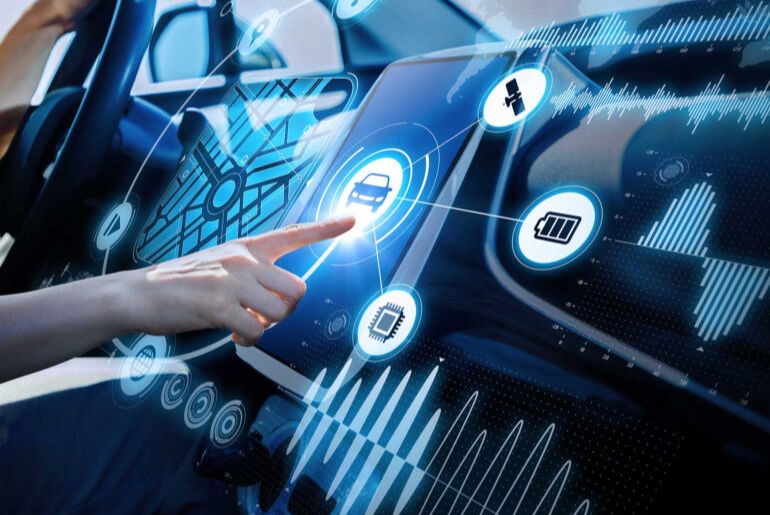The automotive industry is undergoing a revolution driven by advanced technologies, and Human-Machine Interface (HMI) systems are at the forefront of this transformation. These systems enable seamless interaction between drivers and vehicles, enhancing safety, comfort, and the overall driving experience. In this article, we delve into the role of HMI software, its components, and its benefits in modern vehicles.
Understanding Human-Machine Interface (HMI)
HMI is the point of interaction between humans and machines, encompassing hardware and software systems designed to facilitate communication. In the automotive context, HMI bridges the gap between the driver and the vehicle, offering intuitive controls for navigation, entertainment, climate management, and advanced driver-assistance systems (ADAS).
HMI systems aim to create an efficient, user-friendly interface that minimizes driver distraction while providing access to critical vehicle functions.
Key Components of HMI in Vehicles
- Touchscreen Displays
High-resolution touchscreens act as a central hub for controlling multiple functions such as navigation, media, and vehicle settings. Advanced screens integrate haptic feedback to enhance usability. - Voice Recognition
Voice-command systems allow drivers to perform tasks like making calls, adjusting settings, or obtaining navigation directions without taking their hands off the wheel. - Gesture Control
Gesture-based systems enable drivers to perform specific actions through hand movements, reducing the need for physical touch. - Heads-Up Displays (HUDs)
HUDs project critical information, such as speed, navigation, and warnings, onto the windshield, ensuring that drivers keep their eyes on the road. - Haptic Feedback
Physical sensations like vibrations or resistance in steering wheels or touch controls provide tactile feedback, helping drivers confirm actions without visual engagement.
How HMI Enhances Driver Interaction
- Improved Safety
Modern HMI systems integrate ADAS features such as lane departure warnings, adaptive cruise control, and collision alerts. Real-time feedback keeps drivers informed about their surroundings, reducing accidents. - Personalization
HMI software adapts to driver preferences, from seat positioning and climate control to tailored infotainment suggestions, creating a more comfortable driving experience. - Reduced Cognitive Load
Intuitive interfaces simplify complex tasks, allowing drivers to focus on the road. Voice recognition and gesture controls play a critical role in achieving this. - Enhanced Connectivity
HMI systems support seamless integration with smartphones and IoT devices, ensuring that drivers remain connected while maintaining safety. - Advanced Navigation Assistance
Dynamic maps with real-time traffic updates and augmented reality overlays make navigation precise and straightforward.
HMI’s Role in Autonomous Driving
As vehicles transition towards autonomy, HMI systems are evolving to accommodate new functionalities. In semi-autonomous vehicles, HMI bridges the gap between manual and automated driving by providing real-time updates about the vehicle’s operational status. In fully autonomous vehicles, HMI focuses on delivering immersive experiences, enabling passengers to work or relax during transit.
Future Trends in Automotive HMI
- AI Integration
Artificial intelligence enhances voice and gesture recognition, providing more accurate and responsive interactions. AI also predicts user preferences for a personalized experience. - Augmented Reality (AR)
AR-enabled HUDs offer navigation assistance and hazard alerts with contextual overlays, significantly enhancing situational awareness. - Multi-Modal Interaction
Combining voice, gesture, and touch controls enables drivers to choose their preferred mode of interaction, ensuring flexibility and convenience. - Over-the-Air (OTA) Updates
HMI systems equipped with OTA capabilities allow manufacturers to update software, add new features, and improve system performance remotely.
Challenges in HMI Development
- Balancing Complexity and Usability
Designers must ensure that advanced features do not overwhelm users or compromise safety. - Cybersecurity Concerns
As vehicles become increasingly connected, protecting HMI systems from cyber threats is paramount. - Cost Implications
Integrating advanced HMI systems can increase vehicle costs, posing challenges for affordability in mass-market models.
Conclusion
Human-Machine Interface (HMI) systems represent the convergence of technology and usability, shaping the future of driving. By enhancing driver interaction through intuitive designs, HMI software fosters a safer, more enjoyable, and connected driving experience. As the automotive industry moves towards autonomy, HMI systems will continue to play a pivotal role in bridging the gap between humans and machines, ensuring that technology remains accessible and beneficial.

